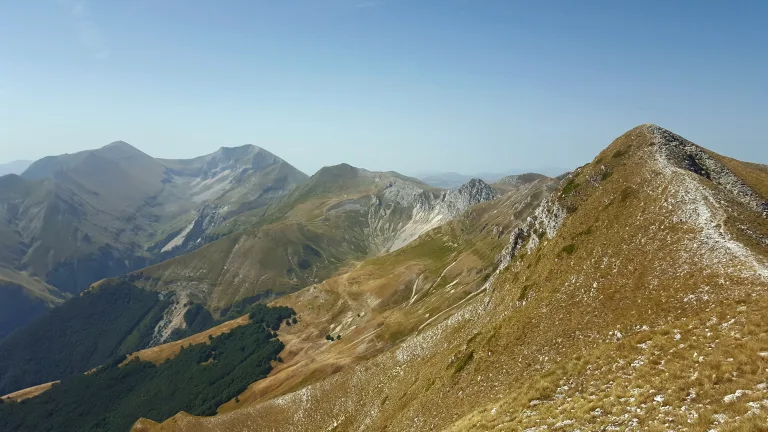The Club Alpino Italiano (CAI) has established a national classification system to describe the technical difficulty, physical effort, and environmental conditions of hiking and mountaineering trails (Sentieri). These labels are found on trail signs, maps, and guides throughout Italy.
| Code/Label | Level | Description | Typical Terrain |
|---|---|---|---|
| T | Tourist | Easy walk | Roads, smooth paths |
| E | Hiker | Moderate | Mountain trails, uneven ground |
| EE | Expert Hiker | Challenging | Steep or exposed paths |
| EEA | Expert with Equipment | Technical | Via ferrata, equipped routes |
1. T – Turistico (Tourist)
Level: Easy
Suitable for: Beginners, families, casual walkers.
Characteristics:
- Well-marked paths or dirt roads.
- Minimal elevation gain and gentle slopes.
- No special equipment or training needed.
- Usually under 2–3 hours of walking.
Examples: Walks through villages, nature trails, lakeside or park paths.
2. E – Escursionistico (Hiking)
Level: Intermediate
Suitable for: Regular hikers with some experience and good fitness.
Characteristics:
- Clearly marked mountain or forest trails.
- Moderate elevation gain and uneven terrain.
- May include rocks, roots, or short steep sections.
- Basic orientation and hiking boots recommended.
Examples: Typical mountain or hill trails like those in the Monti Sibillini or Gola del Furlo reserves.
3. EE – Escursionisti Esperti (Experienced Hikers)
Level: Advanced
Suitable for: Hikers with experience on mountain terrain.
Characteristics:
- Narrow, steep, or exposed paths, possibly with scree or rocky sections.
- May require the use of hands for balance in a few passages.
- Good physical condition and familiarity with mountain environments required.
- Proper gear essential (boots, poles, weather protection).
Examples: Trails with steep ridges or rocky slopes, like Monte Vettore approaches or Monte Catria routes.
4. EEA – Escursionisti Esperti con Attrezzatura (Experienced Hikers with Equipment)
Level: Via ferrata / Equipped route
Suitable for: Expert hikers trained in using climbing gear.
Characteristics:
- Equipped with cables, ladders, or pegs.
- Exposure to heights is significant.
- Requires helmet, harness, and via ferrata set.
- Demands technical ability and sure-footedness.
Examples: Via ferrata routes in the Dolomites or the Marche Apennines (e.g., via ferrata del Furlo).
5. EEA-F / EEA-PD / EEA-D (Subcategories of EEA)
These are sublevels used to specify difficulty within via ferrata routes:
- F (Facile) – Easy, with limited exposure.
- PD (Poco Difficile) – Moderately difficult, some technical sections.
- D (Difficile) – Difficult, long or exposed routes requiring strength and endurance
For more detailed info, or if you find different codes than specified above, please refer to the CAI websites and this document from CAI Rovigo.


Comments are closed.